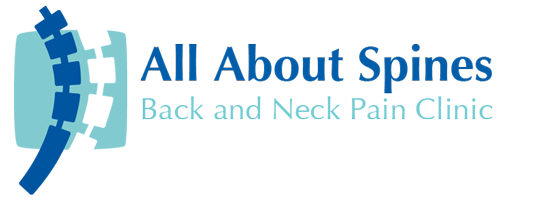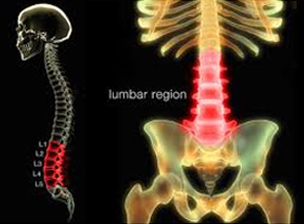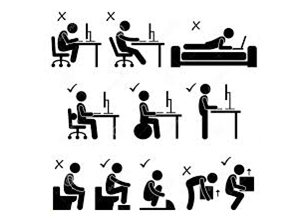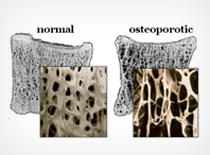Back & Neck Clinic
BACK AND NECK CLINIC
" The Back and Neck Clinic " is a special multidisciplinary clinic dedicated to
the non operative treatment of the acute and chronic pain disorders associated with the spine.
 OUR TEAM :
OUR TEAM :
Our staff includes professionals specializing in neuromuscular
and musculoskeletal disorders ,who provide customized treatment to each patient.
Our team comprises of :-
1.CONSULTANT ORTHOPAEDIC SURGEON.
2.CONSULTANT ANAESTHESIOLOGIST.
3.PHYSIOTHERAPIST.
4.CHIROPRACTOR.
5.CLINICAL PSYCHOLOGIST.
6.NUTRITIONIST.
All types of acute injuries are treated at the clinic.
Whiplash injury to the neck, patients injured as the result of sports, occupational incidents or automobile accidents, bending, lifting, twisting or even while walking, are treated in the clinic.
Chronic back pain due to abnormal posture like seating habits in office,
traveling on bumpy roads have also made our younger generations to
suffer. Herniated discs, bulging discs, sciatica make them ill and
disturb their daily routine.
You Should Visit Us If :

 Back pain can cause a number of symptoms, each of which we have listed below. If you are suffering from one or more of the following, please make an appointment at our clinic. Remember; do not treat the symptoms….Treat the cause.
Back pain can cause a number of symptoms, each of which we have listed below. If you are suffering from one or more of the following, please make an appointment at our clinic. Remember; do not treat the symptoms….Treat the cause.
» If you experience any pain, discomfort or disability relating to your spine
» If you have radiating pain in the arm and the leg
» If you have any numbness, tingling or weakness in the hand and the feet
» If you have injuries such as sprains, strains and fractures involving the spine
» If you experience recurrent symptoms with periodic flare-ups of lower back or neck pain
» If you have back or neck pain that hasn't been helped with standard pain treatments
» If you are experiencing pain post surgery or fracture
» If you have headache and dizziness
» If you have facial pain and numbness
» If your walking pattern has changed
» Upper back pain
The Causes of Lower Back Pain

There are many different conditions that can result in lower back pain which include
 Sprained ligaments, strained muscles, ruptured disks, trigger points and inflamed joints. While sports injuries or accidents can lead to injury and pain, sometimes even the simplest movements can have painful results. In addition, conditions such as arthritis, poor posture, obesity, psychological stress and even kidney stones, kidney infections, blood clots, or bone loss can lead to pain. Many things can cause lower back pain, and if left untreated, some can be quite serious.
Sprained ligaments, strained muscles, ruptured disks, trigger points and inflamed joints. While sports injuries or accidents can lead to injury and pain, sometimes even the simplest movements can have painful results. In addition, conditions such as arthritis, poor posture, obesity, psychological stress and even kidney stones, kidney infections, blood clots, or bone loss can lead to pain. Many things can cause lower back pain, and if left untreated, some can be quite serious.
» Subluxations : Whenever there is a disruption in the normal movement or position of the vertebrae, the result is pain and inflammation. In the lumbar spine, these usually occur at the transition between the lower spine and the sacrum. Subluxations can lead to debilitating lower back pain.
» Disc Herniations (slipped disc) : Contrary to popular belief, a herniated disc does not automatically mean that you are going to suffer from lower back pain. In fact, one study found that almost half of all adults had at least one bulging or herniated disc, even though they did not suffer any back pain from it. On the other hand, herniated discs can be a source of intense and debilitating pain that frequently radiates to other areas of the body. Unfortunately, once a disc herniates, they rarely, if ever, completely heal.
» Sprains, Strains and Spasms : This is commonly the source of low back pain among the weekend warriors. You know, the type who have very little physical activity during the week, but once the weekend arrives, they push themselves way too much, overworking the muscles or ligaments of the low back , leading to small tears in the tissues, which then become painful, swollen and tight.
» Stress : Whenever you become stressed, your body responds by increasing your blood pressure and heart rate, flooding your body with stress hormones and tightening up your muscles. When you are stressed all the time, the chronic tension causes your muscles to become sore, weak and loaded with trigger points. If you are stressed out all of the time and you have low back pain, it is important to do some relaxation exercises, such as deep breathing, as well as to get regular exercise.
Why is posture so important?

 The three natural curves of the spine plus the discs in the spine help absorb the "shock" or "forces" of everyday life. Jobs or tasks that require bending forward all day (in addition to the 3,000 and 5,000 times a day we ordinarily bend forward), decrease the natural curves of the spine, resulting in more stress being placed on the back side of ligament and joints of cervical and lumbar spine.
The three natural curves of the spine plus the discs in the spine help absorb the "shock" or "forces" of everyday life. Jobs or tasks that require bending forward all day (in addition to the 3,000 and 5,000 times a day we ordinarily bend forward), decrease the natural curves of the spine, resulting in more stress being placed on the back side of ligament and joints of cervical and lumbar spine.
» Overall, bad posture results in more wear and tear on the spinal structures.
» After age 30, all the years of straining the normal tissue from slouching eventually decreases structural stability, allowing for greater wearing down of ligaments.
» Postural misalignment can cause radiating pain away from the back and spine due, for instance, to a pinched nerve; and muscle spasms can create headaches and neck/scapular pain.
» Pain often begins as a soreness or stiffness in the neck and shoulder blades and can progress to headache pressure and band-like symptoms around head and/or back tightness that can progress to the hip, leg, and toes.
» Many factors contribute to the onset of pain, including job duties, hobbies, household responsibilities, studying, and genetics.
Optimal body positioning to decrease neck and back pain



» Sleeping : Get into a neutral position, either on your back (use 1 pillow) or side (use 1 pillow). Avoid lying on your stomach if you have neck pain. When lying on your side, make sure your head is positioned such that you are looking ahead, not down at your feet. Contour pillows are good to use (though they take some time to get used to), or you can use pillows that incorporate a cervical roll.
» Driving : Stay upright with your head against the headrest and straighten arms out to keep shoulders back. Tilt rearview mirror a bit toward the roof so that an upright posture is necessary to maintain the total field of vision in the mirror.
» Using a computer : Screen should be positioned at eye level, with head back and chin in. Sit back in chair and use a lumbar roll. Use attached arm on monitor or other device to hold documents at eye level.
» Reading : Don't read in bed. Often, too much head flexion is created if pillows are bunched up behind the head. Instead, sit with your back against the headboard or in a chair next to the bed.
» Enjoying hobbies : For counter- or lap-based hobbies such as quilting, sewing, collecting items in albums, etc., Donot continuously look down for long periods of time without taking a break. Change your physical position and stretch in the opposite direction about every 20 minutes.
» Gardening : Don't do marathon gardening sessions. Take frequent breaks. Half kneel or squat when working.
» Cleaning : When possible, half kneel or squat to keep spine in a neutral position.
» Watching television : Sit up straight in the chair or on your couch. Don't slouch. Get up periodically and walk around.
:: FREQUENTLY ASKED QUESTIONS (FAQ’S) ::
What happens if the pain is not treated?

Pain is a signal that tells the body that something is wrong. Chronic pain affects the personal and professional life of the patient making the patient irritable, sad or depressed. The patient may take expensive painkillers continuously without medical guidance and experience side effects like acidity and other reactions. In addition, the patient may not be able to exercise, have gradual weight gain and a rise in blood pressure and blood sugar levels. Thus, pain is a ‘Disease’ that affects both the patient and the family.
What is the solution?

Chronic pain must be treated as early as possible with a combination of medicines, pain blocks, lifestyle modifications, counselling and education to prevent further worsening. It is important to know that pain can be reduced, and in many cases, completely cured.
What is a Back and Neck clinic? How does it help?

A “Back and Neck clinic” is a highly specialized centre where patients suffering from any kind of pain are assessed and treated using various techniques. Many patients who have incurable illnesses may experience great discomfort and pain during the last stages. This affects the patient and the family.
Is there a standard treatment for all the patients with pain?

Treatment is tailor made for every patient after a thorough medical check up. Chronic pain may be reduced with the latest specialized injections or interventions called Pain Blocks. Once the pain is reduced, it is followed by a treatment plan comprising of medicines, exercises, diet and long term lifestyle modifications that will bring permanent relief from the much suffered pain so that you and your loved ones can enjoy the best possible quality of life.
What is a pain block?

If you have been referred for a Pain Block, it means you will be treated by an injection around the specific nerve responsible for your pain. These injections are done under local anaesthesia, usually in an operation theatre. There is almost 100% accuracy because the exact point of injection is confirmed using either X-ray, Ultrasound or CT scan guidance.
Further, we have advanced pain blocks like Radiofrequency Ablation, Nucleoplasty, Spinal Cord Stimulators, Intra thecal Pumps, etc., which may be used in specialized pain conditions like Post Back Surgery Pain Syndrome, Trigeminal Neuralgia and Advanced Cancer Pain.
The injections or the pain blocks will help to relieve pain significantly. Once pain relief is achieved, it is easier to do exercises and rehabilitation that will promote weight loss, good health and recovery to a full and normal life.
Are these injections harmful ?

These injections are given with utmost care, and due to their accuracy, and standards of safety, there are no major risks involved. As the recovery from these injections is quite fast, these injections also reduce hospital stay and encourage faster return to normal life. These procedures are given as per international standard with good scientific evidence to justify them. Besides, these procedures are affordable and inexpensive.
Are these injections only a temporary measure for relief?

Most back and neck problems in modern society are caused by bad posture, obesity, stress and lack of exercise. These problems arise due to lifestyle disorders. There is no magic medicine to correct stress, bad posture, poor eating and exercise habits.
However, due to these factors once pain sets in, most patients cannot exercise or lose weight. They are trapped in this cycle of pain and inability to recover. In such cases, a pain block reduces the pain and allows the patient to do the right exercises to lose weight, correct the posture and become healthy and fit again. This is our goal.
However, due to these factors once pain sets in, most patients cannot exercise or lose weight. They are trapped in this cycle of pain and inability to recover. In such cases, a pain block reduces the pain and allows the patient to do the right exercises to lose weight, correct the posture and become healthy and fit again. This is our goal.
Will a person still require to take painkillers?

Our aim is to find the best combination of medicine, exercise, pain blocks (when required) and lifestyle modification that will make sure your pain is managed permanently. Painkillers form a very minor part of our treatment, and they are used only if necessary.

 OUR TEAM :
OUR TEAM :

 OUR TEAM :
OUR TEAM :































 Back pain can cause a number of symptoms, each of which we have listed below. If you are suffering from one or more of the following, please make an appointment at our clinic. Remember; do not treat the symptoms….Treat the cause.
Back pain can cause a number of symptoms, each of which we have listed below. If you are suffering from one or more of the following, please make an appointment at our clinic. Remember; do not treat the symptoms….Treat the cause. Sprained ligaments, strained muscles, ruptured disks, trigger points and inflamed joints. While sports injuries or accidents can lead to injury and pain, sometimes even the simplest movements can have painful results. In addition, conditions such as arthritis, poor posture, obesity, psychological stress and even kidney stones, kidney infections, blood clots, or bone loss can lead to pain. Many things can cause lower back pain, and if left untreated, some can be quite serious.
Sprained ligaments, strained muscles, ruptured disks, trigger points and inflamed joints. While sports injuries or accidents can lead to injury and pain, sometimes even the simplest movements can have painful results. In addition, conditions such as arthritis, poor posture, obesity, psychological stress and even kidney stones, kidney infections, blood clots, or bone loss can lead to pain. Many things can cause lower back pain, and if left untreated, some can be quite serious. The three natural curves of the spine plus the discs in the spine help absorb the "shock" or "forces" of everyday life. Jobs or tasks that require bending forward all day (in addition to the 3,000 and 5,000 times a day we ordinarily bend forward), decrease the natural curves of the spine, resulting in more stress being placed on the back side of ligament and joints of cervical and lumbar spine.
The three natural curves of the spine plus the discs in the spine help absorb the "shock" or "forces" of everyday life. Jobs or tasks that require bending forward all day (in addition to the 3,000 and 5,000 times a day we ordinarily bend forward), decrease the natural curves of the spine, resulting in more stress being placed on the back side of ligament and joints of cervical and lumbar spine.



